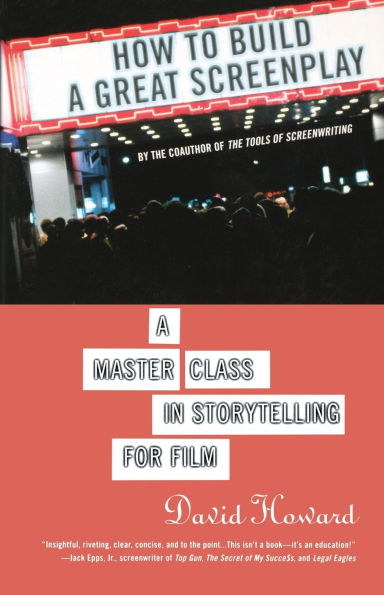Acclaimed USC screenwriting teacher David Howard has guided hundreds of students to careers in writing for film and television. Drawing on decades of practical experience and savvy, How to Build a Great Screenplay deconstructs the craft of screenwriting and carefully reveals how to build a good story from the ground up. Howard eschews the "system" offered by other books, emphasizing that a great screenplay requires dozens of unique decisions by the author. He offers in-depth considerations of:
* characterization
* story arc
* plotting and subplotting
* dealing with coincidence in story plotting
* classical vs. revolutionary screenplay structure
* tone, style, and atmosphere
* the use of time on screen
* the creation of drama and tension
* crucial moments in storytelling
Throughout the book, Howard clarifies his lessons through examples from some of the most successful Hollywood and international script-oriented films, including Pulp Fiction, American Beauty, Trainspotting, North by Northwest, Chinatown, and others. The end result is what could very well become the classic text in the field—-a bible for the burgeoning screenwriter.
Acclaimed USC screenwriting teacher David Howard has guided hundreds of students to careers in writing for film and television. Drawing on decades of practical experience and savvy, How to Build a Great Screenplay deconstructs the craft of screenwriting and carefully reveals how to build a good story from the ground up. Howard eschews the "system" offered by other books, emphasizing that a great screenplay requires dozens of unique decisions by the author. He offers in-depth considerations of:
* characterization
* story arc
* plotting and subplotting
* dealing with coincidence in story plotting
* classical vs. revolutionary screenplay structure
* tone, style, and atmosphere
* the use of time on screen
* the creation of drama and tension
* crucial moments in storytelling
Throughout the book, Howard clarifies his lessons through examples from some of the most successful Hollywood and international script-oriented films, including Pulp Fiction, American Beauty, Trainspotting, North by Northwest, Chinatown, and others. The end result is what could very well become the classic text in the field—-a bible for the burgeoning screenwriter.

How to Build a Great Screenplay: A Master Class in Storytelling for Film
464
How to Build a Great Screenplay: A Master Class in Storytelling for Film
464Paperback(First Edition)

Product Details
| ISBN-13: | 9780312352622 |
|---|---|
| Publisher: | St. Martin's Publishing Group |
| Publication date: | 01/24/2006 |
| Edition description: | First Edition |
| Pages: | 464 |
| Product dimensions: | 5.50(w) x 8.50(h) x 1.03(d) |
